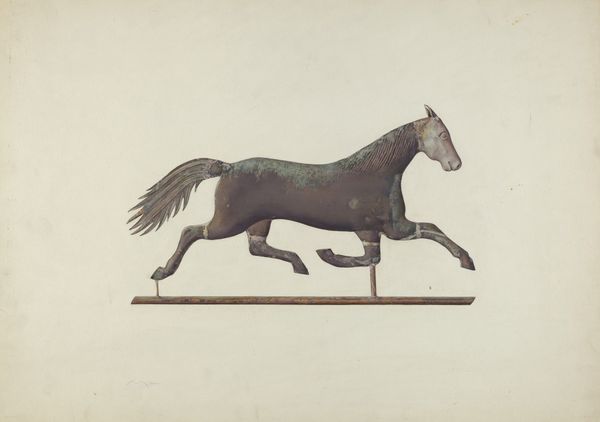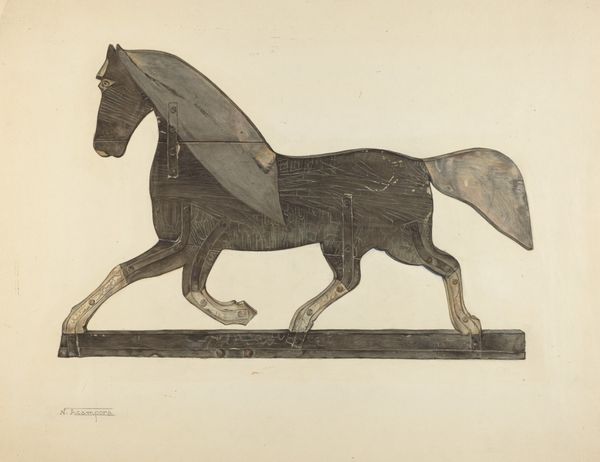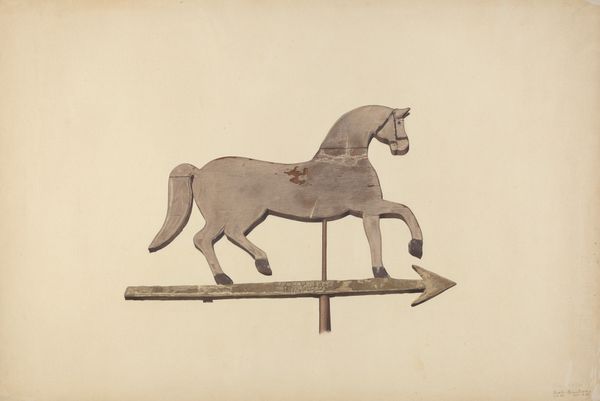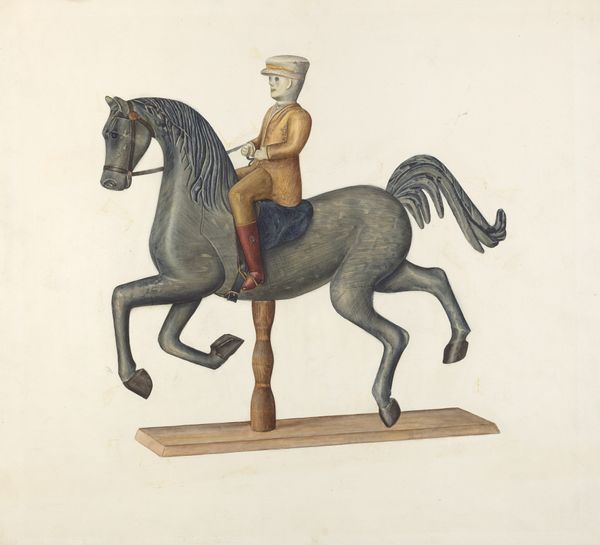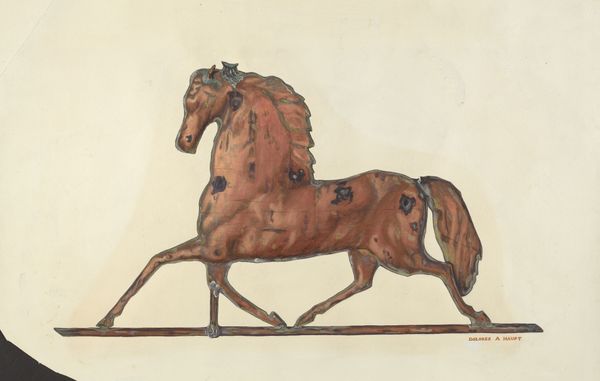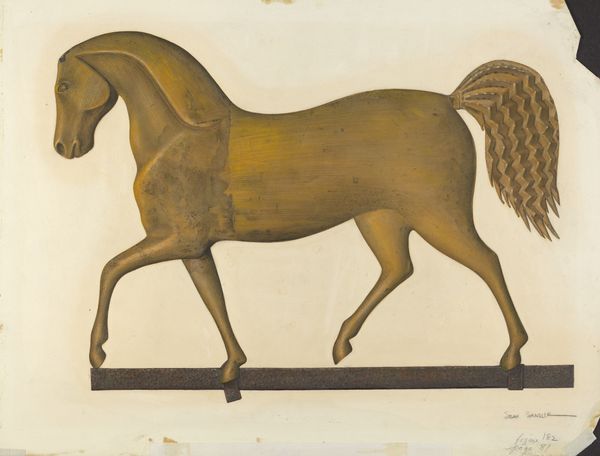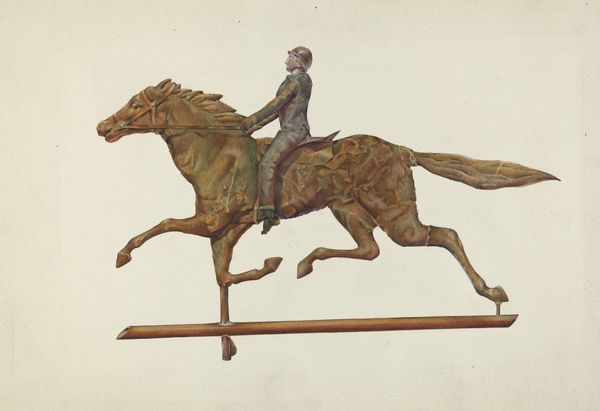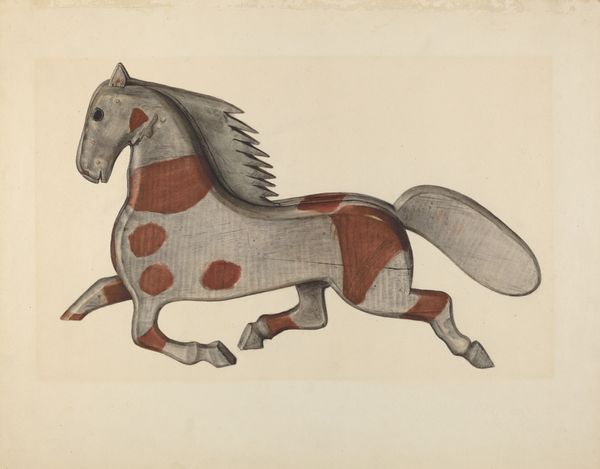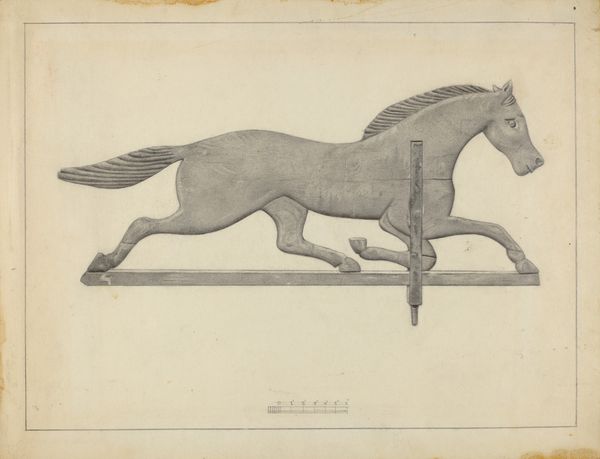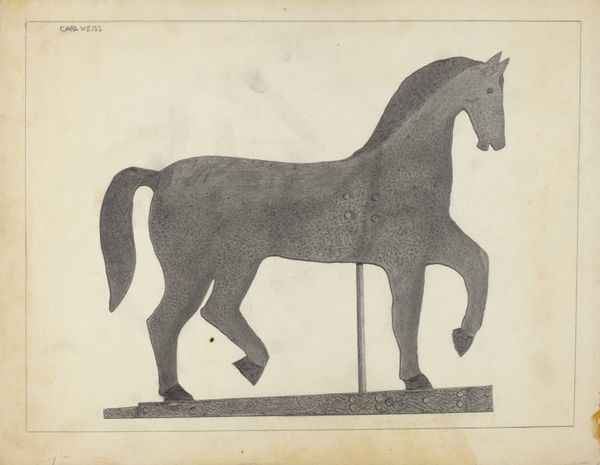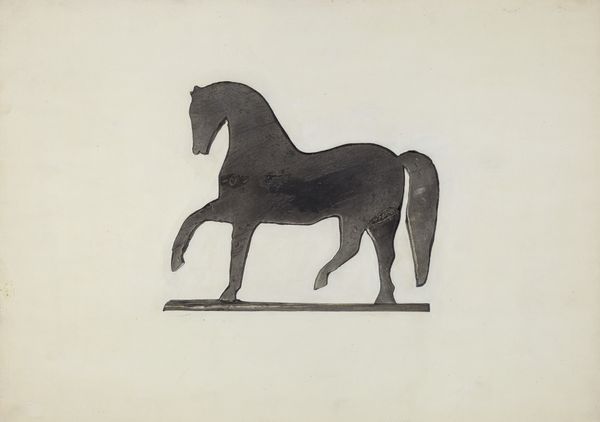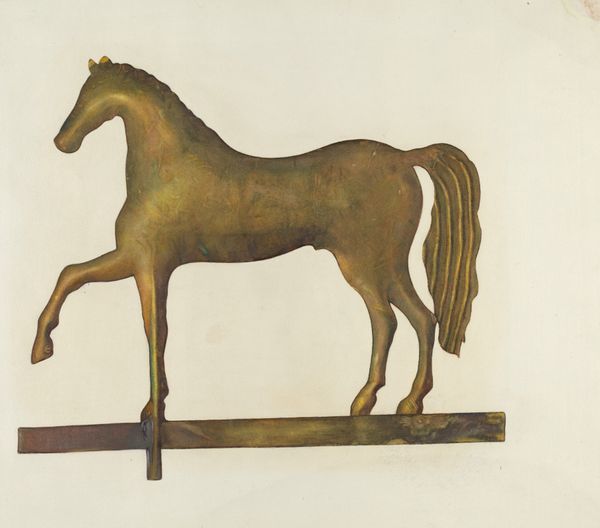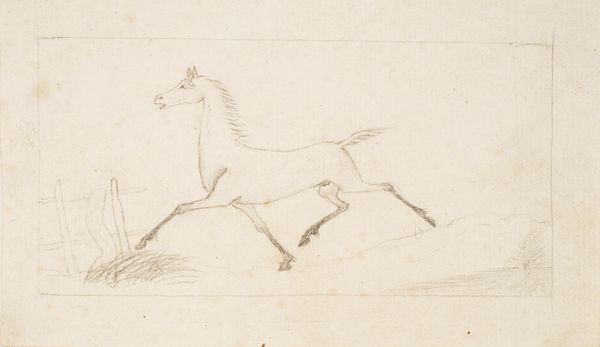
drawing
#
portrait
#
drawing
#
caricature
#
figuration
Dimensions: overall: 27.8 x 37.8 cm (10 15/16 x 14 7/8 in.) Original IAD Object: 15" long
Copyright: National Gallery of Art: CC0 1.0
Editor: Here we have "Metal Weather Vane," a drawing from around 1940. I find the rigid, almost robotic depiction of the horse and rider kind of intriguing. What strikes you about this piece? Curator: It's fascinating how seemingly innocuous objects like weather vanes can reflect deeply embedded social hierarchies. Notice the golden hue; does it evoke ideas of wealth and status to you? Editor: Absolutely. It gives the image a regal air, doesn't it? Curator: Precisely. Consider also the historical context. In the 1940s, equestrian activities were heavily associated with the upper classes, reinforcing divisions of wealth and access. Does the almost caricatured style of the rider amplify any class-based messages, do you think? Editor: It makes the rider appear less like an individual and more like a symbol. Almost like the whole figure represents privileged masculinity. Curator: That's a crucial observation! By reducing the rider to a type, the artwork may, consciously or unconsciously, be commenting on the performance of power. How might feminist theory interpret the dominant representation of this male rider? Editor: Perhaps, through its focus on a male equestrian, the drawing unwittingly underscores how patriarchal structures have historically shaped leisure activities and our relationship with the natural world. Curator: Indeed! By examining it critically, we start to understand how an apparently simple weather vane drawing can unlock profound questions about social inequalities. Editor: I hadn’t thought about a weather vane holding so much cultural weight! This perspective really enriches my understanding.
Comments
No comments
Be the first to comment and join the conversation on the ultimate creative platform.
